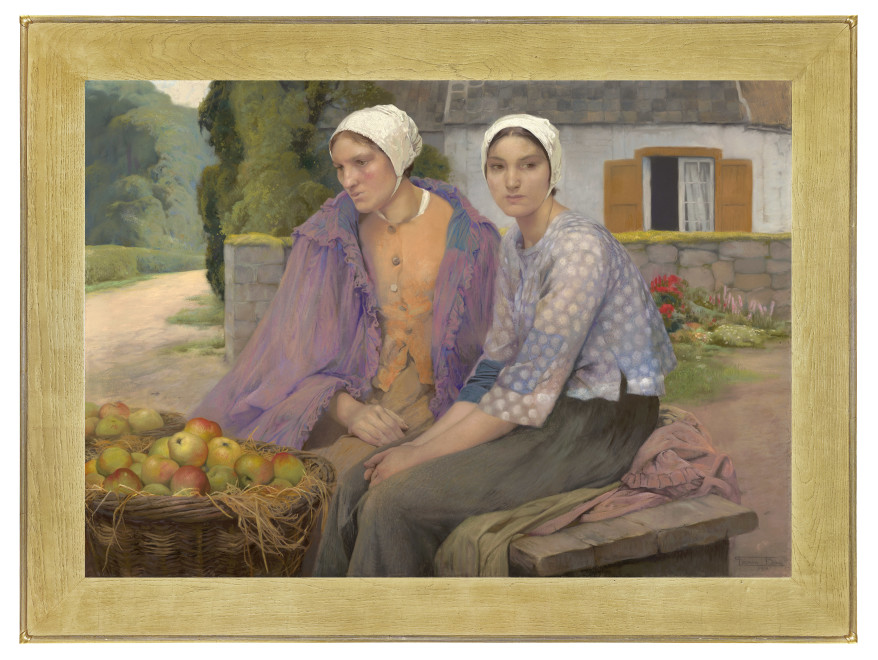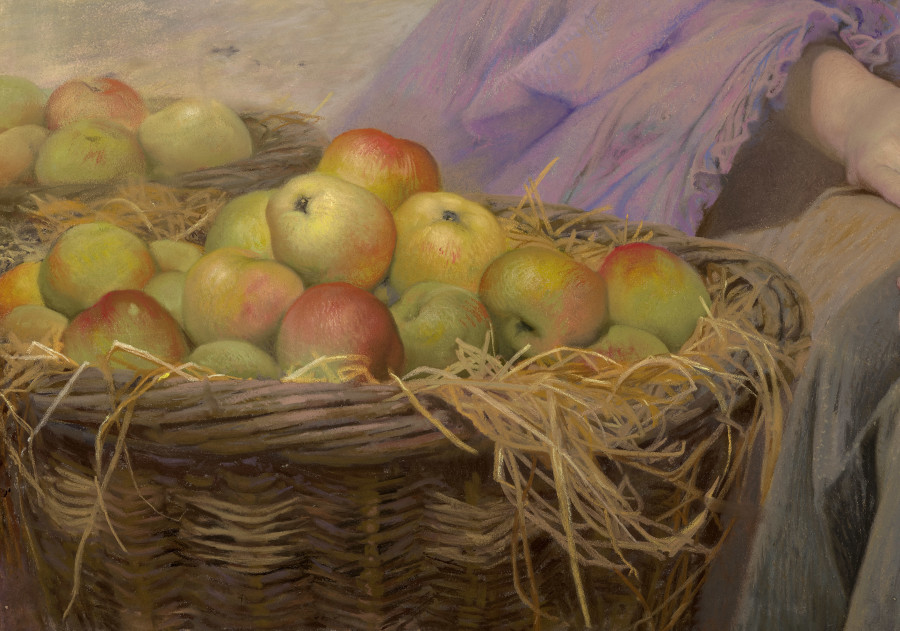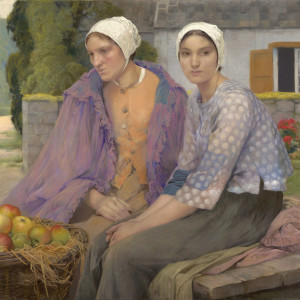The Apple Harvest is an extraordinary example of not only Baes’ technical virtuosity but also his mastery at depicting rural genre and still life subjects.
Provenance
Sale: Galerie Moderne, Brussels, 23 November 1982, lot 991
Private collection, Belgium (acquired at the above sale)
Thence by descent
Catalogue note
While Firmin Baes was a very accomplished painter as evidenced by his bronze medal at the 1900 Paris Exposition Universelle for his impressive oil, The Archers, it was his mastery of pastel – especially after 1900 – that established his reputation. Baes was somewhat unique in his approach to pastel, an unforgiving medium. Rather than applying his chalks to paper or board as was the normal practice, Baes instead preferred canvas. This may have been a necessity as so many of his pastels were drawn on a very large scale and perhaps only canvas provided the required strength for the support. Baes also developed a technique that allowed the colored chalks to stay affixed to the canvas, a process that resulted in a fresh, luminous palette.
The Apple Harvest is an extraordinary example of not only Baes’ technical virtuosity but also his mastery at depicting rural genre and still life subjects. Executed in 1914, when Baes was at the height of his career, the scale of this pastel would be considered large even for a painting (it measures 40 -5/8 by 57 ¼ in (102 by 145 cm.). Set outside a country cottage, Baes depicts two seated peasant women resting after what has clearly been a successful harvest. His choice of palette for their garments conforms to the array of colors found in a tin of pastels – soft violet, peach, mauve, pale blue for the chemise decorated with polka dots and snowy white for their caps. While the wicker basket filled with shiny ripe apples is an essential feature in Baes’ narrative, the brighter palette of red, yellow and green for the fruit set against the muted brown tones of the basket and straw can almost be considered an independent still life within the overall composition. However, the scene in its entirety successfully reveals an artist with the technical skill of the highest order who is confident in the harmony, contrast and balance of color in his use of the pastel crayon.






